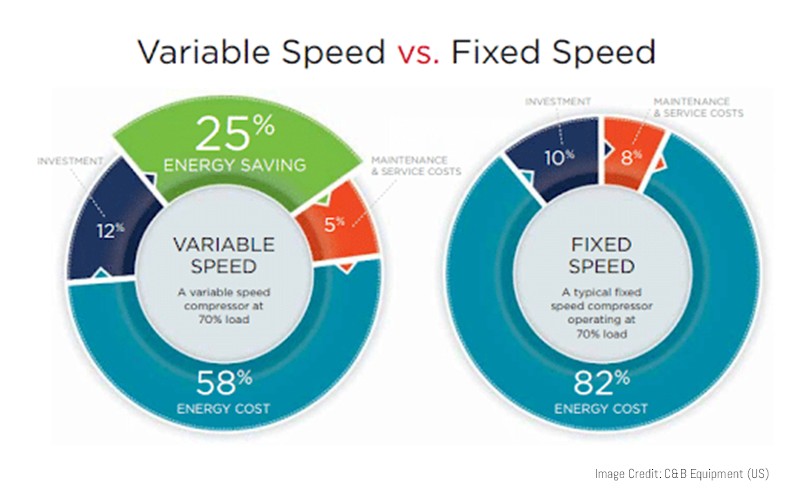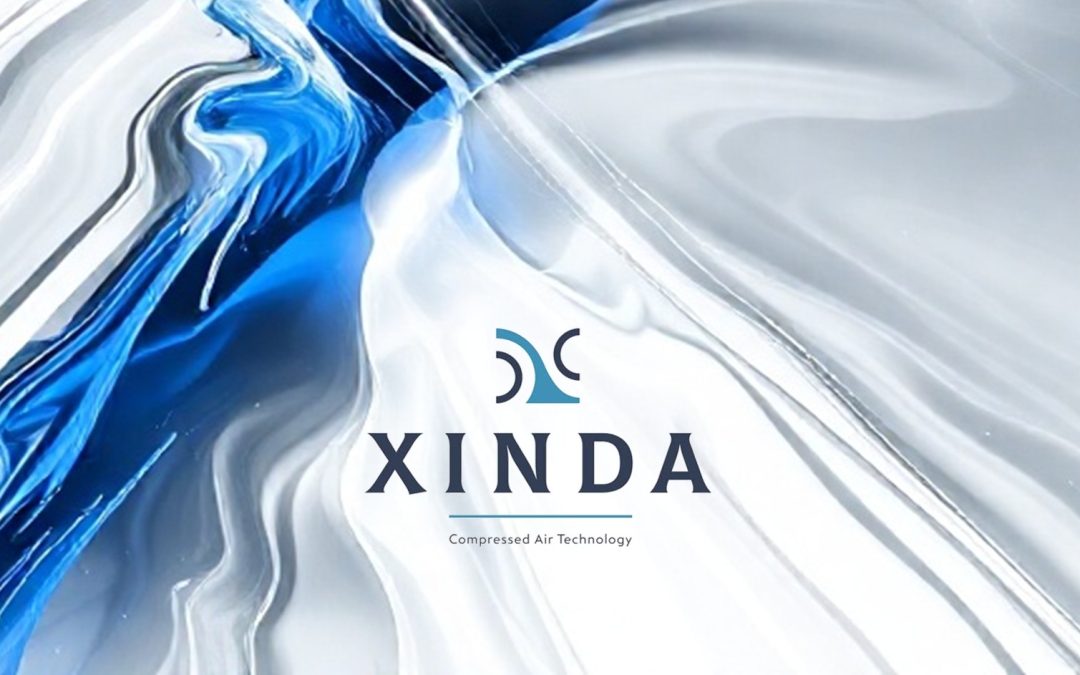Energy-Efficient Compressor Technologies: VSD vs Fixed Speed
- Fixed-Speed Compressors
- How they work:
A fixed-speed compressor runs at one constant motor speed. When air demand is reached, it loads (compresses) air. When demand is met, it unloads or stops.
Pros:
- Simpler design, lower upfront cost.
- Robust and reliable for steady, predictable air demand.
- Easier maintenance due to less complex electronics.
Cons:
- Less efficient when air demand fluctuates.
- Consumes energy even in “unloaded” mode (idling can waste 20–30% of power).
- Higher overall lifecycle cost if usage varies a lot.
- VSD (Variable Speed Drive) Compressors
- How they work:
A VSD compressor adjusts the motor speed to match real-time air demand. If demand is low, the motor slows; if demand rises, the motor speeds up.
Pros:
- Significant energy savings (can reduce consumption by 35–50% compared to fixed speed).
- Soft start reduces electrical stress, improving motor and component life.
- Tighter pressure control, reducing pressure band and system leaks.
- Ideal for applications with fluctuating or unpredictable air demand.
Cons:
- Higher upfront investment.
- More complex design → requires skilled servicing and quality power supply.
- In very stable demand situations, savings may not justify cost.
- Energy Efficiency Comparison
- Fixed-Speed: Best for consistent, 24/7 operations where air demand barely changes. Efficiency is lower when running part-load.
- VSD: Best for variable demand environments—saves electricity by matching supply to demand. Over time, energy savings often offset the higher purchase cost.
Quick Analogy
Think of it like driving a car:
- Fixed Speed Compressor = pressing the accelerator fully and using the brake when you don’t need speed.
- VSD Compressor = using cruise control that automatically adjusts your speed to match road conditions—saving fuel (energy).

